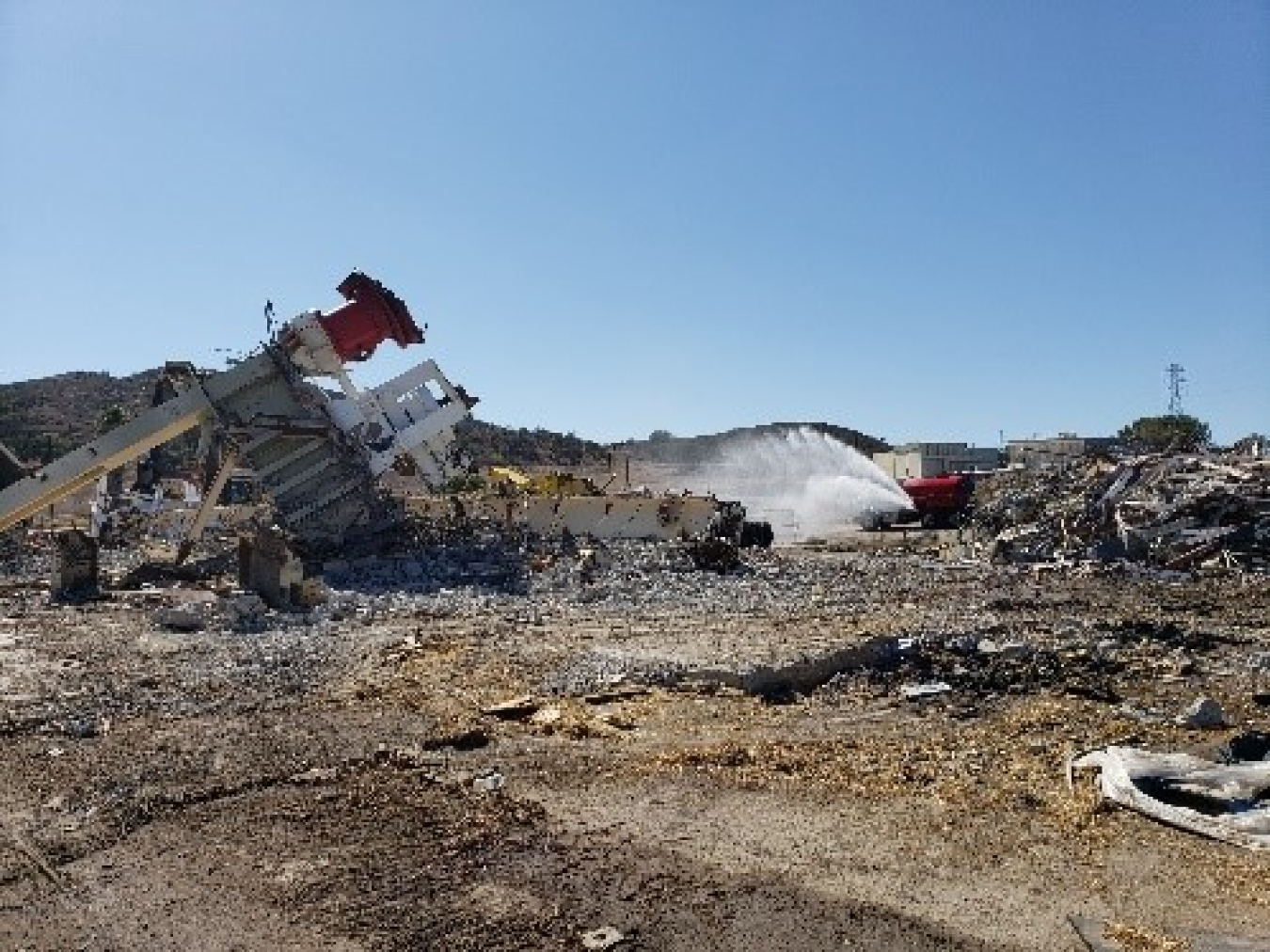On Oct. 1, 2021, EM completed demolition of the final 18 DOE-owned buildings at the Energy Technology Engineering Center (ETEC) site in Ventura County, California. This marked a milestone in the ongoing cleanup of the site where nuclear energy and liquid metals research was conducted from the 1950s to the late 1980s. EM Update spoke with Joshua Mengers, acting field manager at ETEC, about the demolition campaign and its final achievement.
Q: What is the significance of completing building demolition?
A: Safely competing demolition is a significant accomplishment for the site. We take public health and environmental protection very seriously. We have a shared interest with the community, the local tribes, and the state to clean the site safely and effectively. Removing risks by taking down the remaining buildings I think demonstrates our commitment to completing our job at ETEC. It also showed that the DOE and the California Department of Toxic Substances Control (DTSC) can work together on cleanup — two agreements signed in 2020 actually cleared the way for the final demolitions to move forward.
Q: What preparations were taken for demolishing the final 18 DOE buildings?
A: Long before we started any work, we examined the buildings for presence of radiological constituents and hazardous chemicals. We developed detailed implementation plans and safety procedures, which were reviewed and approved by the DTSC. We also performed a safety review of the demolition plan that our contractor worked up to ensure the work would be done safely.
Many months before demolition, we installed four air monitors around the perimeter of the site to collect baseline data on air quality, and then continued air monitoring throughout the demolition process. We will continue to monitor now that demolition is completed.
DOE technical staffers and the DTSC provided oversight of demolition activities. The buildings came down safely and without incident over a period of about 15 months. The area now looks very different. I must add how proud I am of our crews, who safely completed the building demolition while in compliance with health and safety guidelines during the COVID-19 pandemic.
We committed to the state that all demolition debris would be disposed at a licensed facility out of state, and we are in the process of completing that work now.
Q. The last buildings to come down were Buildings 4462 and 4463, which comprised the Sodium Pump Test Facility, or SPTF. Were there challenges there?
A. The SPTF was a nine-story building that was built in 1972 and was used to test components of large reactor pumps before they were installed in a radiological environment. It had a red and white crane on its roof that you could see from parts of Simi Valley, so that’s a landscape change right there.
Before we started demolition, we conducted studies that confirmed the SPTF was not a radiological facility. The U.S. Environmental Protection Agency had attached a preliminary “Class 1” radiological designation to the SPTF based solely on the buildings’ proximity to radiological buildings on the site. Those other buildings were more than a football field away, and our pre-demolition studies confirmed the SPTF buildings were non-radiological.
The SPTF was just too tall and top-heavy to use long shears and other conventional methods we had used to take down other buildings. We deemed it unsafe to have workers cutting the supports to weaken them enough for demolition. The safest option was to use shaped charges to cut down the building without exposing worker to the additional risks. These shaped charges were controlled explosives that ensured the SPTF would fall into predetermined areas. Our world-class demolition team was spot on in engineering just how the building would fall, and I was impressed at just how well it worked.
Before demolition, we pre-wetted the structure and the ground in the surrounding area to control dust, which was consistent with approved and permitted dust suppression techniques. This dust suppression method was selected because our analysis determined that extensive pre-wetting was as effective as using water cannons.
We also installed an additional three air monitors immediately near the SPTF, two downwind, and one upwind. We monitored air quality before and throughout the SPTF demolition process and found no increase in particulate matter around the perimeter of the site from any building demolition, including the SPTF demolition. Inspectors from the Ventura County Air Pollution Control District reviewed DOE’s dust control procedures and air monitoring data and did not find any issues.

Q. What’s next for ETEC cleanup?
A. With the buildings down we are focusing on further collaboration with DTSC on remaining cleanup of soils and groundwater. Some actions await the publication of the state programmatic environmental impact report. We will continue to work cooperatively with DTSC, the local Native American tribes, and the local community to ensure our cleanup is conducted safely, securely, and transparently.
To receive the latest news and updates about the Office of Environmental Management, submit your e-mail address.
